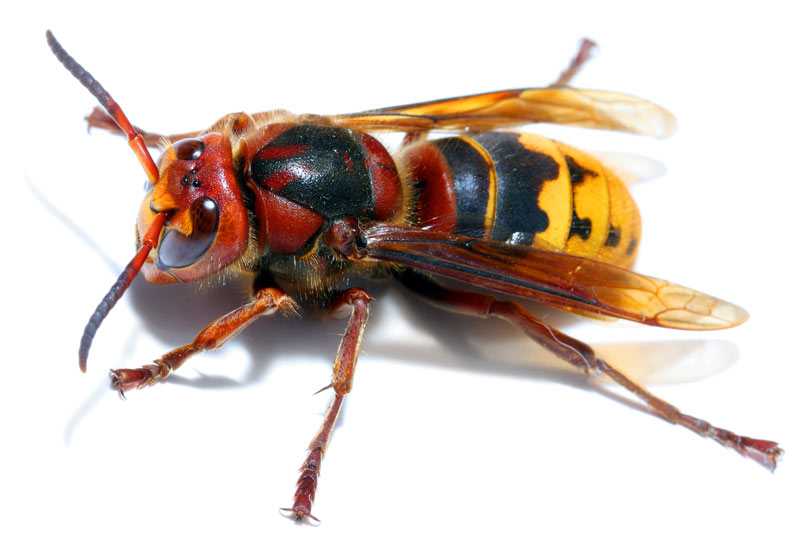
European Hornets
Large, yellow and reddish-brown hornets.
Facts & Information
European Hornets
(Vespa crabro)
1 – 1½ inch Long
Active Months:
July – November
Very Aggressive
Insect Quantity:
200 – 800 per nest
Insect Colors


European Hornet Behavior:
European hornets (Vespa crabro L.) were first reported in North America about 1840 in New York. Since then, they have spread to most of the eastern United States, reaching as far west as Louisiana and the Dakotas. European hornets are also commonly called the brown or giant hornets, and are sometimes mistakenly referred to as “Japanese” hornets which is a different species more commonly called the “Asian giant hornet” (Vespa mandarinia Smith). The European hornet is the largest and, technically, the only, true hornet found in the United States, although the large Asian giant hornet has been found recently in Washington state and previously across the border in Canada.
Adults somewhat resemble yellowjackets, but are much larger (about 1 – 11⁄2 inches) and are brown with wide yellow markings rather than black with yellow markings. Queens, which may be seen in the spring, are more reddish than brown, and are larger than the workers. The head of European hornets is reddish-brown, becoming yellowish near the face. Their nests are typically built in hollow trees, but they are often found in barns, sheds, attics, and wall voids of houses. Unlike its cousin, the bald-faced hornet, European hornets rarely build nests that are free hanging or in unprotected areas. Frequently, the nest is built at the cavity opening, rather than deep within. The outside of the exposed nest will be covered with coarse, thick, tan, paper-like material fashioned from decayed wood fibers. Nests built in wall voids may emit a noticeable stench.
How Serious Are European Hornets?
European hornets generally avoid conflict with humans but will aggressively defend their nest and food sources. Their sting can be life-threatening to people who are allergic to their venom.
Why call a professional to remove European Hornets?
Calling a professional for European hornet removal is essential due to the risks involved. European hornets can become aggressive when their nests are disturbed, and their stings can be painful and potentially trigger severe allergic reactions. Professional pest control experts have the expertise and equipment to safely locate and remove hornet nests, minimizing the risk of stings and ensuring the safety of occupants.




Our European Hornet Treatment Process:
Based on the large size and aggressive habits of the European Hornet, we may not have a way to effectively treat and eliminate a European Hornet nest from your property. Each case may vary depending on the amount of activity and location of the nest. It’s best to contact us and provide all the details so we can discuss the options we can offer.
Call us 845-445-8273

Not Sure What Type of Bees You Have?
If you see Bees or Hornets coming and going from an opening in your home or yard, take a picture of the insects as well as the location where they are so we can positively identify the type of bees and text the pictures to 845-445-8273 or send us a bee removal request HERE.
Image Gallery

















